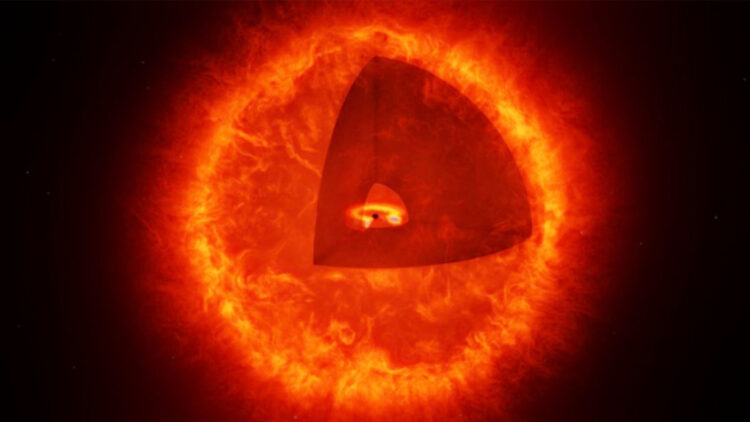It’s possible that some of the early Universe’s tiny red lights are not actually primordial galaxies. According to a recent analysis published in Astronomy & Astrophysics, of a “little red dot” known as The Cliff using the James Webb Space Telescope, they might be something more exotic.
Anna de Graaff and her team from the Max Planck Institute for Astronomy, are working to solve a longtime cosmological question: why do some objects, extremely far-off show a strong Balmer break, which is a characteristic that typically manifests in older galaxies many years after the Big Bang?
The researchers write, “We … conclude that the rest-optical and near-infrared continuum of The Cliff cannot originate from a massive, evolved stellar population with an extremely high stellar density.” Instead, they argue the light fits best with a bright, ionizing source hidden or “reddened” by dense gas close by.
Right now, they say, “the only model capable of producing both the strength and shape of the observed Balmer break is that of a black hole star.”
Why the cliff looks old
First, let’s clarify. A Balmer break is a sharp step in an object’s spectrum that results from short-wavelength light being absorbed by hydrogen. Usually, cooler A-type stars take over after the hottest, short-lived O and B stars have already died, causing a strong Balmer break to appear. It requires time. However, a galaxy cannot appear that mature until about 600 million years after the Big Bang, when many tiny red dots first appear.
Since the Cliff’s light has been traveling for 11.9 billion years and exhibits the most noticeable Balmer break yet for this class of objects, it is an exceptionally difficult case.
Although the team thought of the typical explanation—many old stars crammed into a small space—the data didn’t match. The continuum, they stated, “cannot originate from a massive, evolved stellar population.” They observed that the spectrum looks like a single source rather than an entire galaxy: something very bright, then significantly distorted by the gas that surrounds it.
They tested a “black hole star,” a supermassive black hole that is actively feeding from an accretion disk and is encased in hot, dense hydrogen that refracts light and creates a Balmer break powerful enough to trick us into believing we are looking at an adult galaxy.
The model of the “Black hole star”
The observed Balmer break is caused by the hole heating nearby hydrogen, which is similar to an active galactic nucleus in miniature, and the thick gas envelope absorbing and re-emitting light.
“The extreme properties of The Cliff forced us to go back to the drawing board, and come up with entirely new models,” says Anna de Graaff. Their tests show how well this black hole-wrapped object replicates the spectrum of The Cliff.
If this is true, it means at least a few enigmatic spots in the Early Universe are not Primordial galaxies that are already teeming with ancient stars.
They might be “black hole stars.” Without changing Cosmology about how galaxies develop after the Big Bang, that could help in the explanation of the strong Balmer breaks. However, it is still a theory.
To verify the existence of such objects, scientists need to collect more research.
A new clue to the cosmic dawn
For now, The Cliff provides the most convincing evidence that the light in these tiny red dots can be dominated by an active nucleus.
As the team writes, “The Cliff presents the strongest direct evidence to date that the Balmer break and rest optical to near-infrared spectral energy distribution in LRDs can be dominated by emission from an active galactic nucleus, rather than evolved stellar populations, although many open questions regarding the black hole and host galaxy properties remain.”

